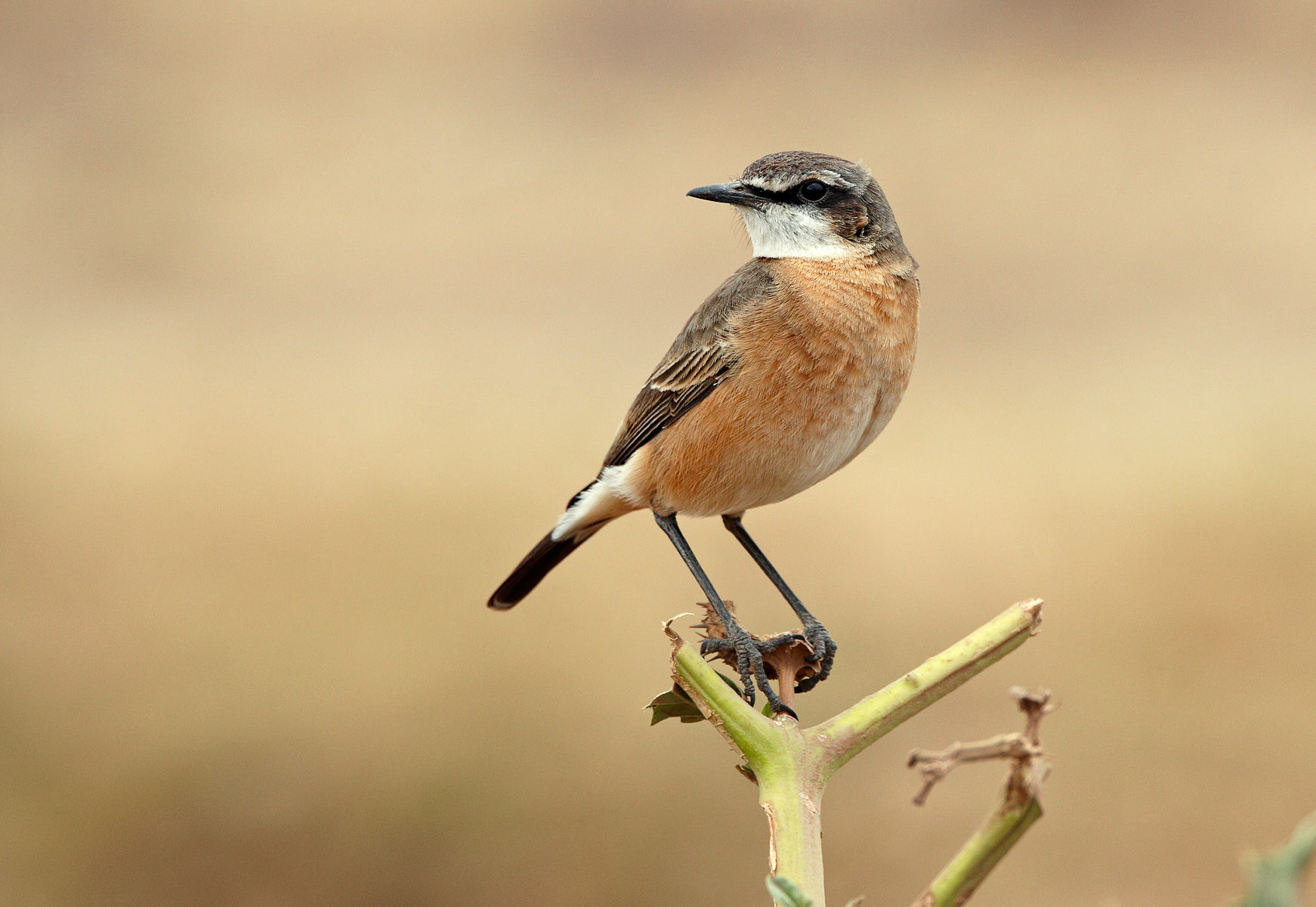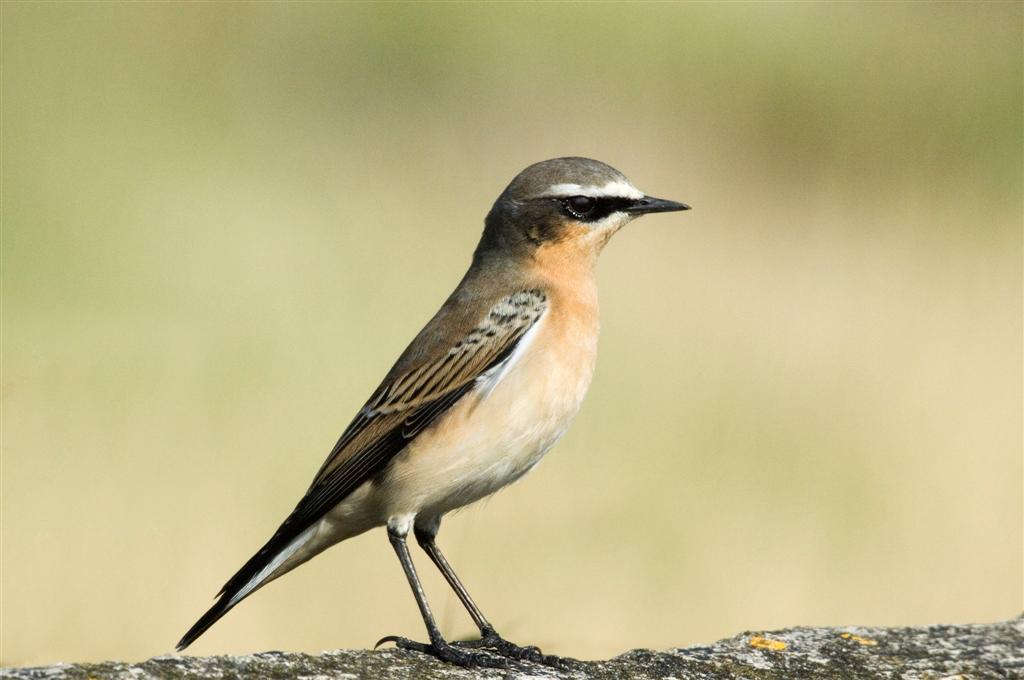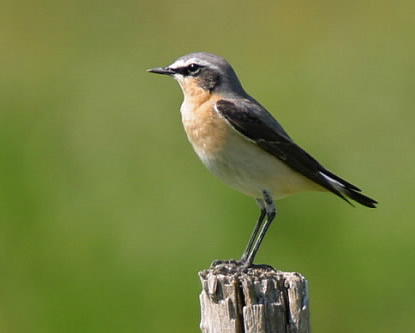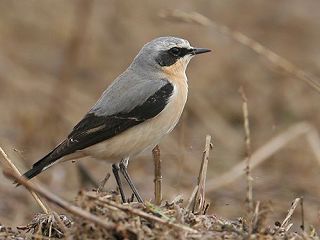
Oenanthe oenanthe
TAXONOMY
Oenanthe oenanthe Linnaeus, 1758.
OTHER COMMON NAMES
English: Northern wheatear; French: Traquet motteaux; German:
Steinschmдtzer; Spanish: Collalba Gris.
PHYSICAL CHARACTERISTICS
5.5–5.9 in (14–15 cm); male 0.6–1.0 oz (18–28 g); female
0.7–1.0 oz (19–28 g). Males have dark gray upperparts, white
underparts, and black wings. Their tails have a white base and
a black tip. Their throats, breasts, and flanks are covered in a
buff wash. Females have brown upperparts and darker brown
wings. A rusty wash covers their throats and breasts.
DISTRIBUTION
Alaska, northern coast of Canada, Baffin Island, coasts of
Greenland, Iceland, and wide band from northwest Europe
south to Iberia and eastwards across Asia; locally Morocco,
Tunisia.
HABITAT
Open grassy ground near rocks, stone walls or crags, sandy
heaths, coastal grassland with outcrops of rock, boulders, or
scree.
BEHAVIOR
Singly or in pairs, terrestrial, running or hopping over open
spaces or perching on small eminences; male sings from perch
or in song flight.
FEEDING ECOLOGY AND DIET
Insects and other small invertebrates; a few berries.
REPRODUCTIVE BIOLOGY
Monogamous and territorial; nest in cavity in rocks or wall or
in hole in ground, loosely made of grass and stems; four to
seven eggs incubated only by female for 13 days; young fledge
after 15 days.
CONSERVATION STATUS
Not threatened.
SIGNIFICANCE TO HUMANS
None known.
Photo Gallery of - Wheatear




 Animalia Life
Animalia Life